一、RESTful(resource representational state transfer)类型接口测试
(一)GUI界面测试工具:jmeter
1、添加线程组
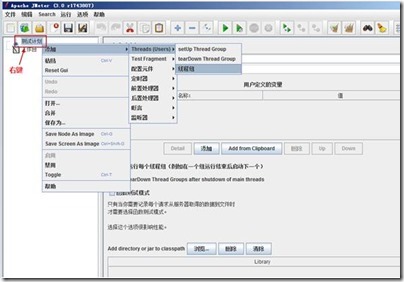
2、添加http请求
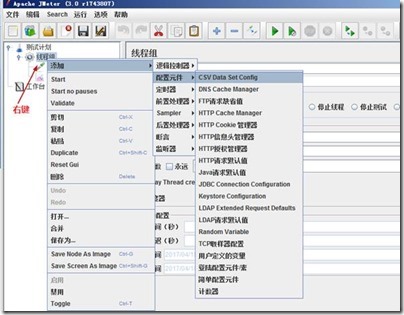
3、为线程组添加察看结果树
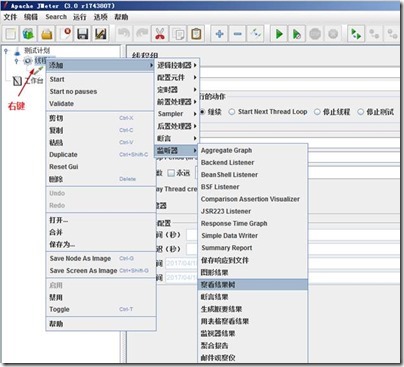
4、写入接口参数并运行
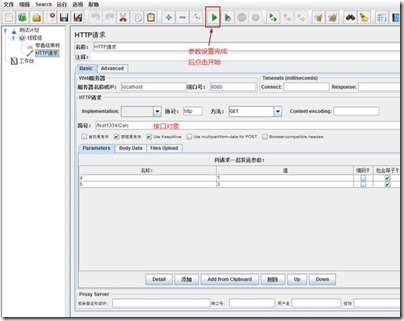
5、在查看结果树窗口查看结果
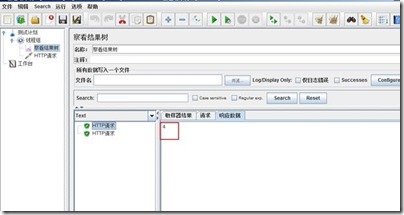
6、多组数据可增加CSVDataSetConfig(添加.csv格式的文件,并在参数值里以${x}格式写入)
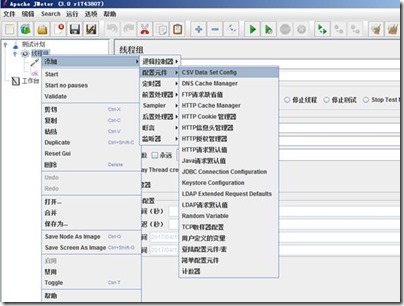
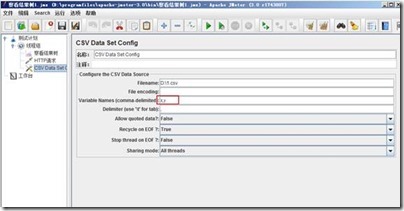
此时变量值填写${变量名},上图x,y表示每次从文件里读取两个参数,分别命名为x,y
(二)JAVA语言脚本测试(HttpClient)
1、GET请求接口测试
python
1 public void TestGet throws URISyntaxException, ClientProtocolException, IOException{
2 //1、创建一个客户端对象
3 CloseableHttpClient client=HttpClients.createDefault();
4 //2、使用URIBuilder()来生成一个get类型的USI
5 URI uri=new URIBuilder().setScheme("http")
6 .setPort(8080)
7 .setHost("localhost")
8 .setPath("/test1334/Calc")
9 .setParameter("a", "2")
10 .setParameter("b", "3").build();
11 //3、新建一个httpget类型请求对象,并将uri传入请求
12 HttpGet get=new HttpGet(uri);
13 //4、新建响应对象,用于接收客户端执行get结果
14 CloseableHttpResponse response=client.execute(get);
15 //5.从响应对象中提取实际结果,与预期结果进行比对
16 if(response.getStatusLine().getStatusCode()==200){
17 System.out.println(EntityUtils.toString(response.getEntity()));
18 }
19 }2、POST请求接口测试
样例(测一个输入两个参数求和的接口):
python
1 public void TestPOST () throws ClientProtocolException, IOException{
2 //1.新建一个客户端对象
3 CloseableHttpClient client=HttpClients.createDefault();
4 //2.新建post类型请求对象,并传入uri
5 HttpPost post = new HttpPost("http://172.31.6.155:8080/test1334/Calc");
6 //3.使用NameValuePair对参数进行打包
7 List<NameValuePair> list=new ArrayList<NameValuePair>();
8 list.add(new BasicNameValuePair("a","1"));
9 list.add(new BasicNameValuePair("b","2"));
10 //4.对打包好的参数,使用UrlEncodedFormEntity工具类生成实体类型数据
11 //Consts.UTF_8设置服务器字符集类型
12 UrlEncodedFormEntity entity=new UrlEncodedFormEntity(list,Consts.UTF_8);
13 //5.将含有请求参数的实体对象放入到post请求对象里
14 post.setEntity(entity);
15 //6.新建一个响应对象接收客户端执行post请求的结果
16 CloseableHttpResponse response=client.execute(post);
17 //7.从响应对象中提取实际结果,与预期结果进行比对
18 if(response.getStatusLine().getStatusCode()==200){
19 System.out.println(EntityUtils.toString(response.getEntity()));
20 }
21 }3、自动化框架
python
1 @RunWith(Feeder.class)
2 public class getParameter {
3 @Test
4 @Source("data/datas.csv") //数据源
5 public void test_get(int x,int y,int expect) throws ClientProtocolException, URISyntaxException, IOException{//expect为预期结果,用于与实际结果进行比对
6 TestRESTfultest=new TestRESTful();//TestRESTful为前边创建TestGet所属类
7 int returns=test.TestGet(x, y);//此处的为修改后的TestGet,添加了参数和返回值;
8 assertEquals(returns,expect); //将结果与预期进行比较
9 }
10 }二、WebService接口测试
(一)GUI界面测试工具:SoapUI
1、新建项目
2、输入WSDL地址或文件
3、修改"?"内的数据
4、开始测试
(二)JAVA语言脚本测试(HttpClient)
1、GET请求接口测试
python
1 public int testGet(int x, int y) throws RemoteException {
2 String target = "http://172.31.6.94:8080/axis2/services/calc?wsdl";//传入地址
3 //创建一个CalcStub对象
4 CalcStub stub = new CalcStub(target);
5 CalcStub.Add add = new CalcStub.Add();
6 //传入参数
7 add.setX(x);
8 add.setY(y);
9 AddResponse response = stub.add(add);//结果
10 int result = response.get_return();
11 return result;
12 }2、POST请求接口测试
python
1 public static void testPOST(int a,int b) throws ClientProtocolException, IOException{
2 //创建客户端对象
3 CloseableHttpClient cli=HttpClients.createDefault();
4 HttpPost po=new HttpPost("http://172.31.6.61:8080/axis2/services/MyService?wsdl");
5 //将soap协议内容添加进来,即soapXML字符串
6 String soapXML="<soapenv:Envelopexmlns:soapenv=\"http://schemas.xmlsoap.org/soap/envelope/\" xmlns:ws=\"http://ws.day3.com\">"
7 +"<soapenv:Header/>"
8 +"<soapenv:Body>"
9 +"<ws:add>"
10 +"<ws:a>"+a+"</ws:a>"
11 +"<ws:b>"+b+"</ws:b>"
12 +"</ws:add>"
13 +"</soapenv:Body>"
14 +"</soapenv:Envelope>";
15 //将String转换成实体类型
16 StringEntity entity=new StringEntity(soapXML,Charset.forName("UTF-8"));
17 po.setEntity(entity);
18 CloseableHttpResponse re=cli.execute(po);
19 System.out.println((re.getEntity()).toString());
20 }行动吧,在路上总比一直观望的要好,未来的你肯定会感 谢现在拼搏的自己!如果想学习提升找不到资料,没人答疑解惑时,请及时加入扣群:  ,里面有各种软件测试+开发资料和技术可以一起交流学习哦。
,里面有各种软件测试+开发资料和技术可以一起交流学习哦。
最后感谢每一个认真阅读我文章的人,礼尚往来总是要有的,虽然不是什么很值钱的东西,如果你用得到的话可以直接拿走:

这些资料,对于【软件测试】的朋友来说应该是最全面最完整的备战仓库,这个仓库也陪伴上万个测试工程师们走过最艰难的路程,希望也能帮助到你!
